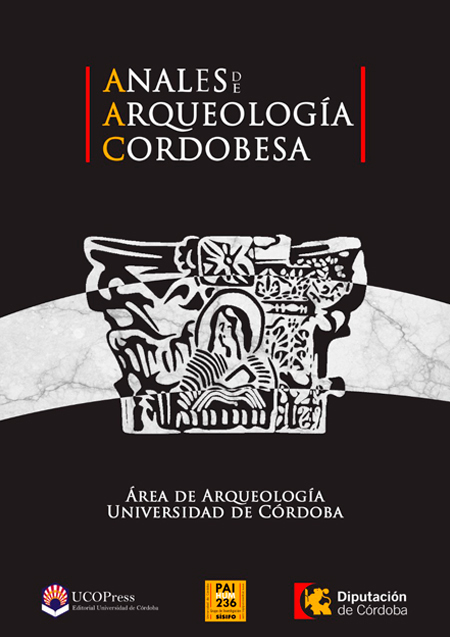Geoarchaeological analysis of the abandonment stage of the Valdepuentes aqueduct, in a sector of its last section (Cordoba, Spain).
DOI:
https://doi.org/10.21071/aac.v0i0.6436Keywords:
Roman aqueduct, Valdepuentes, carbon-14, geoarchaeology.Abstract
This paper deals with the giving up and filling period of the final section of Valdepuentes roman aqueduct. We found evidences related to two phases. Firstly, a carbonated crust on the channel bottom was precipitated; it points out water was flowing after maintenance works was abandoned Later, as we can analyze in three sedimentary units, final specus filled up happened. Radiocarbon dating of two charcoals located inside of the upper channel sediments shows chronologies belonging to tenth century (997 AD ± 25 y 933 AD ± 43).Downloads
Download data is not yet available.
Downloads
Published
2013-12-01
How to Cite
NÚÑEZ GRANADOS, M. A., RECIO ESPEJO, J. M., & GÓMEZ ROMERO, D. (2013). Geoarchaeological analysis of the abandonment stage of the Valdepuentes aqueduct, in a sector of its last section (Cordoba, Spain). Anales De Arquelogía Cordobesa, 135–146. https://doi.org/10.21071/aac.v0i0.6436
Issue
Section
ARTICLES
License
Aquellos autores/as que tengan publicaciones con esta revista, aceptan los términos siguientes:- Los autores/as conservarán sus derechos de autor y garantizarán a la revista el derecho de primera publicación de su obra, el cuál estará simultáneamente sujeto a la Licencia de reconocimiento de Creative Commons que permite a terceros compartir la obra siempre que se indique su autor y su primera publicación esta revista.
- Los autores/as podrán adoptar otros acuerdos de licencia no exclusiva de distribución de la versión de la obra publicada (p. ej.: depositarla en un archivo telemático institucional o publicarla en un volumen monográfico) siempre que se indique la publicación inicial en esta revista.
- Se permite y recomienda a los autores/as difundir su obra a través de Internet (p. ej.: en archivos telemáticos institucionales o en su página web) antes y durante el proceso de envío, lo cual puede producir intercambios interesantes y aumentar las citas de la obra publicada. (Véase El efecto del acceso abierto).


